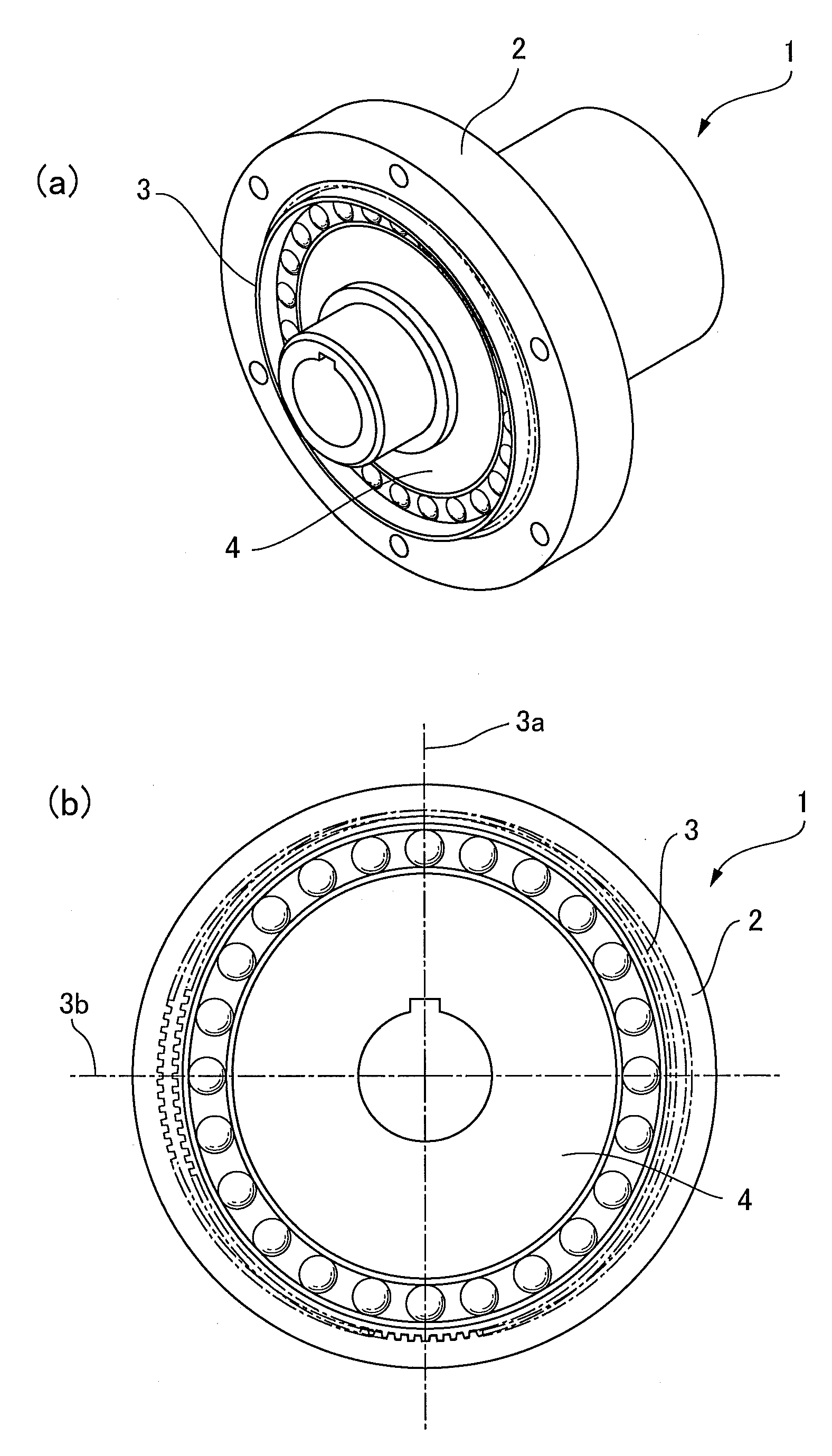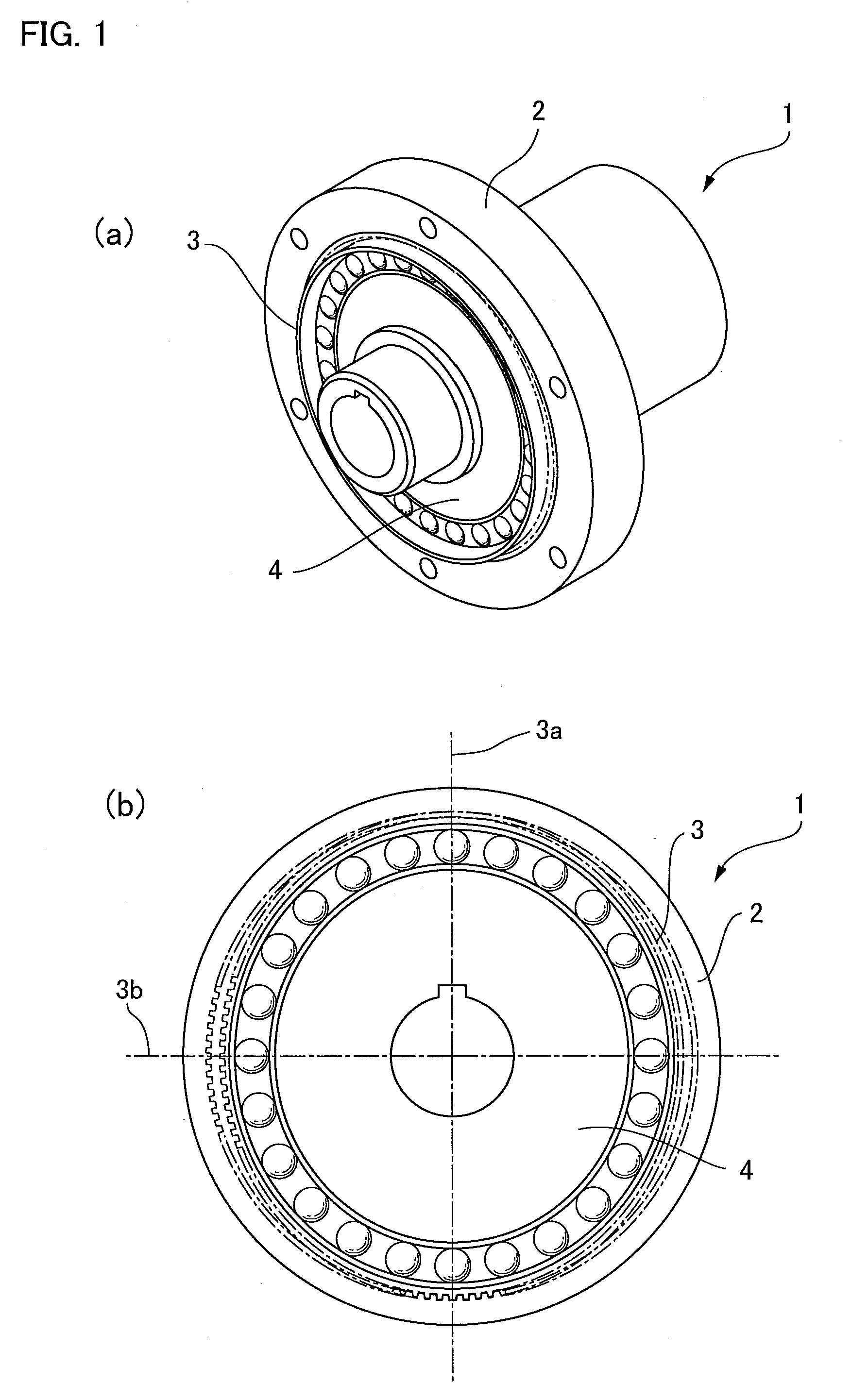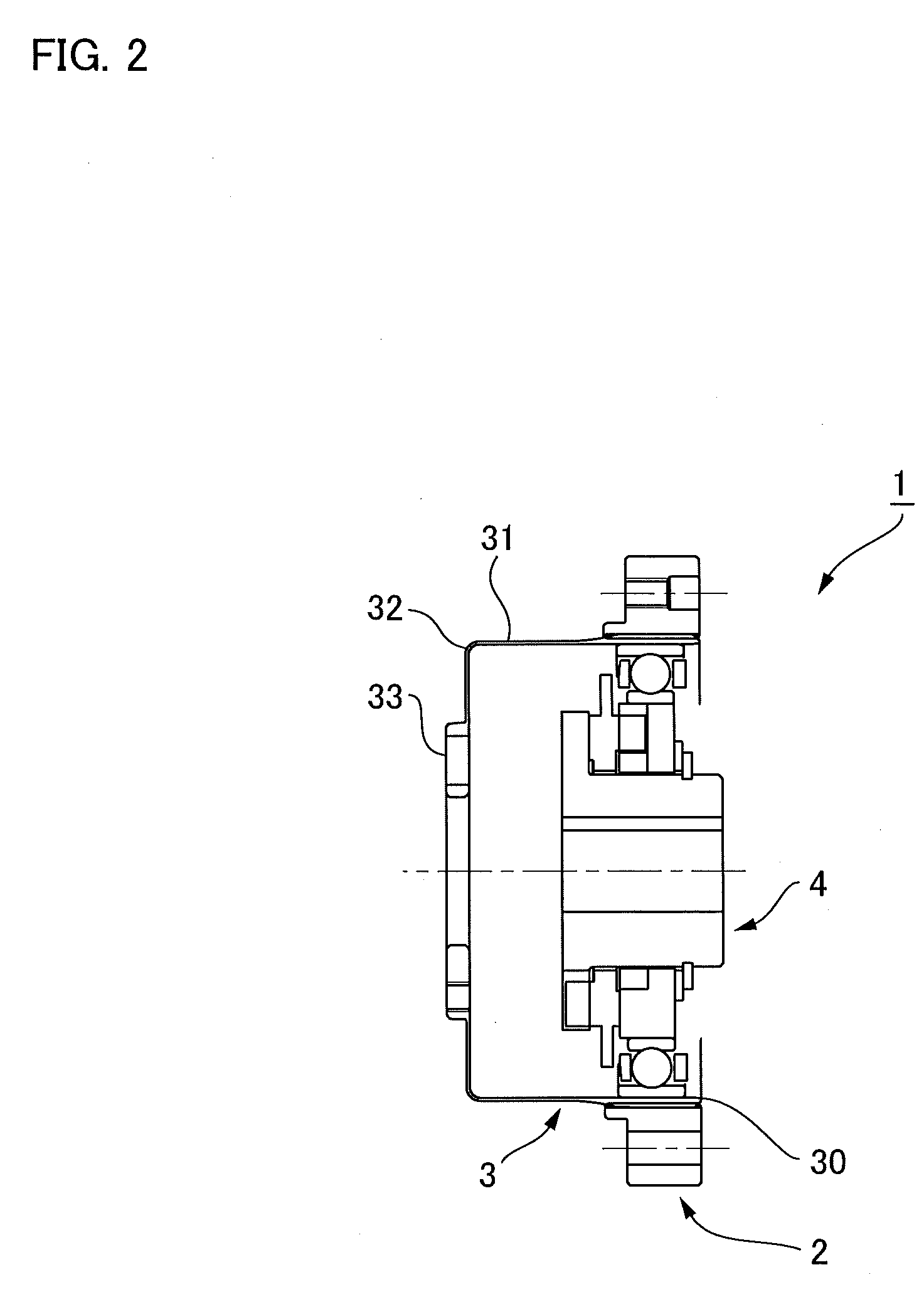Wave Gear Device
- Summary
- Abstract
- Description
- Claims
- Application Information
AI Technical Summary
Benefits of technology
Problems solved by technology
Method used
Image
Examples
Embodiment Construction
[0037]A wave gear device to which the present invention is applied is described below with reference to the accompanying drawings.
[0038]FIGS. 1 and 2 are a longitudinal sectional view and a schematic front view showing a cup-type wave gear device. The cup-type wave gear device 1 comprises a rigid circular spline 2, a cup-shaped flexspline 3 disposed inside the circular spline, and an elliptical wave generator 4 mounted inside the flexspline. The cup-shaped flexspline 3 is bent into an elliptical shape by the wave generator 4. When the wave generator 4 rotates, the positions where the two splines are enmeshed move in a circumferential direction, and relative rotation is generated between the two splines 2, 3 in accordance with the difference in the number of teeth between the splines 2, 3.
[0039]FIG. 3 is an explanatory view showing a state in which the flexspline 3 is bent by coning, wherein (a) is a longitudinal sectional view showing the state before deformation, (b) is a longitudi...
PUM
| Property | Measurement | Unit |
|---|---|---|
| Depth | aaaaa | aaaaa |
| Distance | aaaaa | aaaaa |
Abstract
Description
Claims
Application Information
 Login to View More
Login to View More - R&D
- Intellectual Property
- Life Sciences
- Materials
- Tech Scout
- Unparalleled Data Quality
- Higher Quality Content
- 60% Fewer Hallucinations
Browse by: Latest US Patents, China's latest patents, Technical Efficacy Thesaurus, Application Domain, Technology Topic, Popular Technical Reports.
© 2025 PatSnap. All rights reserved.Legal|Privacy policy|Modern Slavery Act Transparency Statement|Sitemap|About US| Contact US: help@patsnap.com



